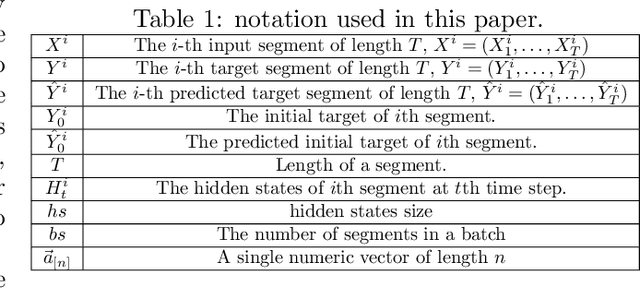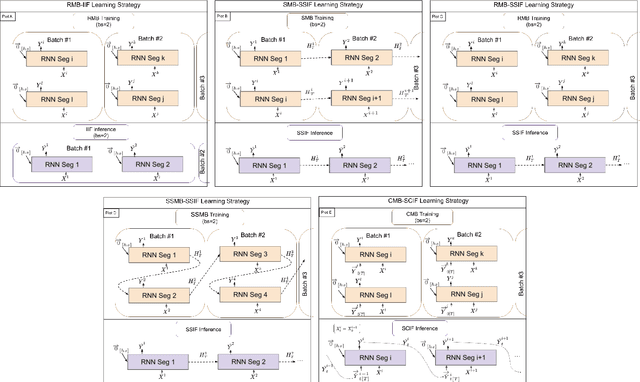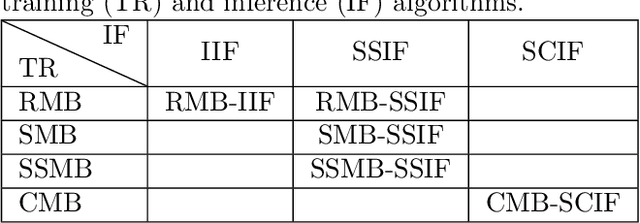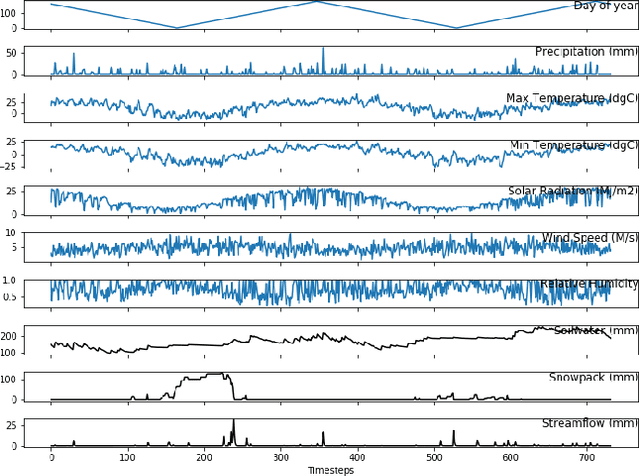Kelly Cutler
Mini-Batch Learning Strategies for modeling long term temporal dependencies: A study in environmental applications
Oct 15, 2022



Abstract:In many environmental applications, recurrent neural networks (RNNs) are often used to model physical variables with long temporal dependencies. However, due to mini-batch training, temporal relationships between training segments within the batch (intra-batch) as well as between batches (inter-batch) are not considered, which can lead to limited performance. Stateful RNNs aim to address this issue by passing hidden states between batches. Since Stateful RNNs ignore intra-batch temporal dependency, there exists a trade-off between training stability and capturing temporal dependency. In this paper, we provide a quantitative comparison of different Stateful RNN modeling strategies, and propose two strategies to enforce both intra- and inter-batch temporal dependency. First, we extend Stateful RNNs by defining a batch as a temporally ordered set of training segments, which enables intra-batch sharing of temporal information. While this approach significantly improves the performance, it leads to much larger training times due to highly sequential training. To address this issue, we further propose a new strategy which augments a training segment with an initial value of the target variable from the timestep right before the starting of the training segment. In other words, we provide an initial value of the target variable as additional input so that the network can focus on learning changes relative to that initial value. By using this strategy, samples can be passed in any order (mini-batch training) which significantly reduces the training time while maintaining the performance. In demonstrating our approach in hydrological modeling, we observe that the most significant gains in predictive accuracy occur when these methods are applied to state variables whose values change more slowly, such as soil water and snowpack, rather than continuously moving flux variables such as streamflow.
 Add to Chrome
Add to Chrome Add to Firefox
Add to Firefox Add to Edge
Add to Edge